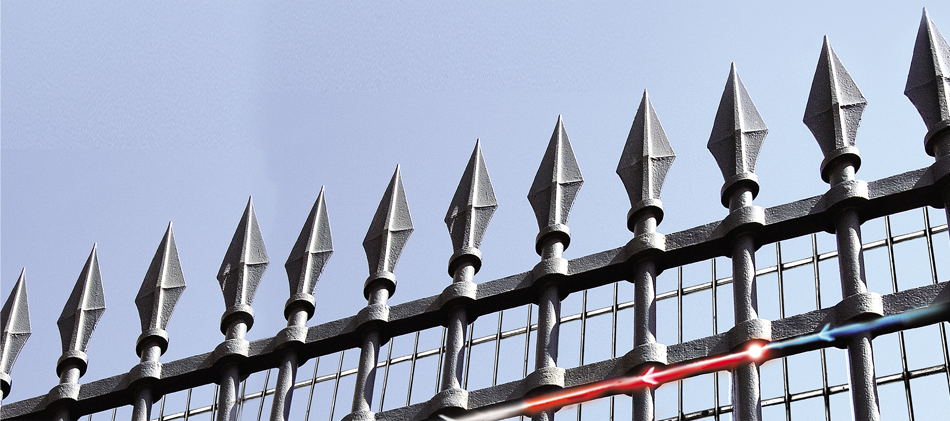Searching large areas to pinpoint a break-in is now a thing of the past, thanks to the innovative Perimeter Intrusion Detection System (PIDS).
Many take safety at airports, rail maintenance areas, utilities compound such as dam, power generation facilities, to name a few, for granted.
Unknown to many, it goes beyond just fencing to keep the perimeters intelligently guarded 24 by 7. Offering highly accurate, reliable detection, our Perimeter Intrusion Detection System (PIDS) is an award-winning highly-innovative solution. It has been approved by UK Centre for the Protection of National Infrastructure (CPNI) for 3-metre high palisade with welded mesh backing. PIDS has also been evaluated by USA National Safe Skies Alliance.

A Cut Above
The PIDS uses discrete sensitive fibre-optic sensors and intelligent signal processing algorithms to detect the slightest disturbances to the physical perimeter while eliminating false and nuisance alarms. As explained by Bernard Lee, Vice President for Sensors Business, Satcom & Sensor Systems, Electronics at ST Engineering, on the sensitivity of the system, “An effective PIDS should have sufficient data points to be able to determine if a long stretch of fence is disturbed, most likely caused by environmental factors such as rain or strong winds, or if only a fence panel is disturbed, most likely caused by intrusion to the fence. To achieve this, sensors need to be placed on fence panels at close spacing. The conventional zone-based solution with only one data point per zone is grossly insufficient to adopt any kind of signal processing techniques to better manage nuisance alarms other than sacrificing sensitivity or resorting to counting system which can be easily defeated.”
The sensors used by PIDS are unique, whereby each sensor have a steady state in which it reflects a specific wave length back to the system when a white light is passed through. Any type of fence disturbance will affect its steady state and change the wavelength reflected, which translates into an intrusion alert.
As to the type of technology used in the sensors, Bernard said,“Our PIDS uses patented packaging method to embed fibre-optic sensors directly onto the fibre-optic cable, which will be installed at a mid-way point of the fence panels. We embed one sensor at close spacing, depending on the type of fence to be protected. It provides pin-point detection accuracy, right down to the spacing interval between two sensors. These sensors in the field provide inputs to the signal processing algorithm, to dynamically adjust better to the noise floor as per the real-time environment and for decision making whether to declare a fence disturbance as a true or false alarm.”

An intruder attempts to breach the perimeter by cutting or scaling the fence. When the fence panel is disturbed, an alert will be triggered to the operations centre.

The nearest strategically placed CCTV on the perimeter is automatically activated to verify the intrusion with pin-point accuracy.

The security response team is quickly activated and dispatched to the precise intrusion locations.

The intruder is apprehended before any damage is done. The entire process is monitored by the operations centre.
Cost-Effective, Minimum Downtime
As sensors can be expensive, PIDS offers a more cost-effective solution that incurs a lower total cost of ownership. While an effective PIDS requires direct sensing points, the market is moving towards full fibre-optic based solutions, discarding conventional solutions requiring field electronics. Our fibre-optic cable with fibre-optic sensors embedded works on light and requires no power supply, signal cable, or electronics in the field. This makes the solution simple and easy to implement, and thus cost-effective. If a cable is damaged or cut, a cable cut alarm immediately accompanied with the cut location will be provided. Repairs can be done by fusion splicing, without the need to replace the entire cable, within 60 minutes. The sensor cable is implemented with a robust architecture as well, using a multiple-port interrogator. Each port supports a channel of a certain length, usually between 150 and 200 metres, carrying multiple sensors, and the channels are isolated from each other. During the event of a cut cable or repairs, other channels will remain unaffected.
Learn more about AGIL Fence.
Contact us